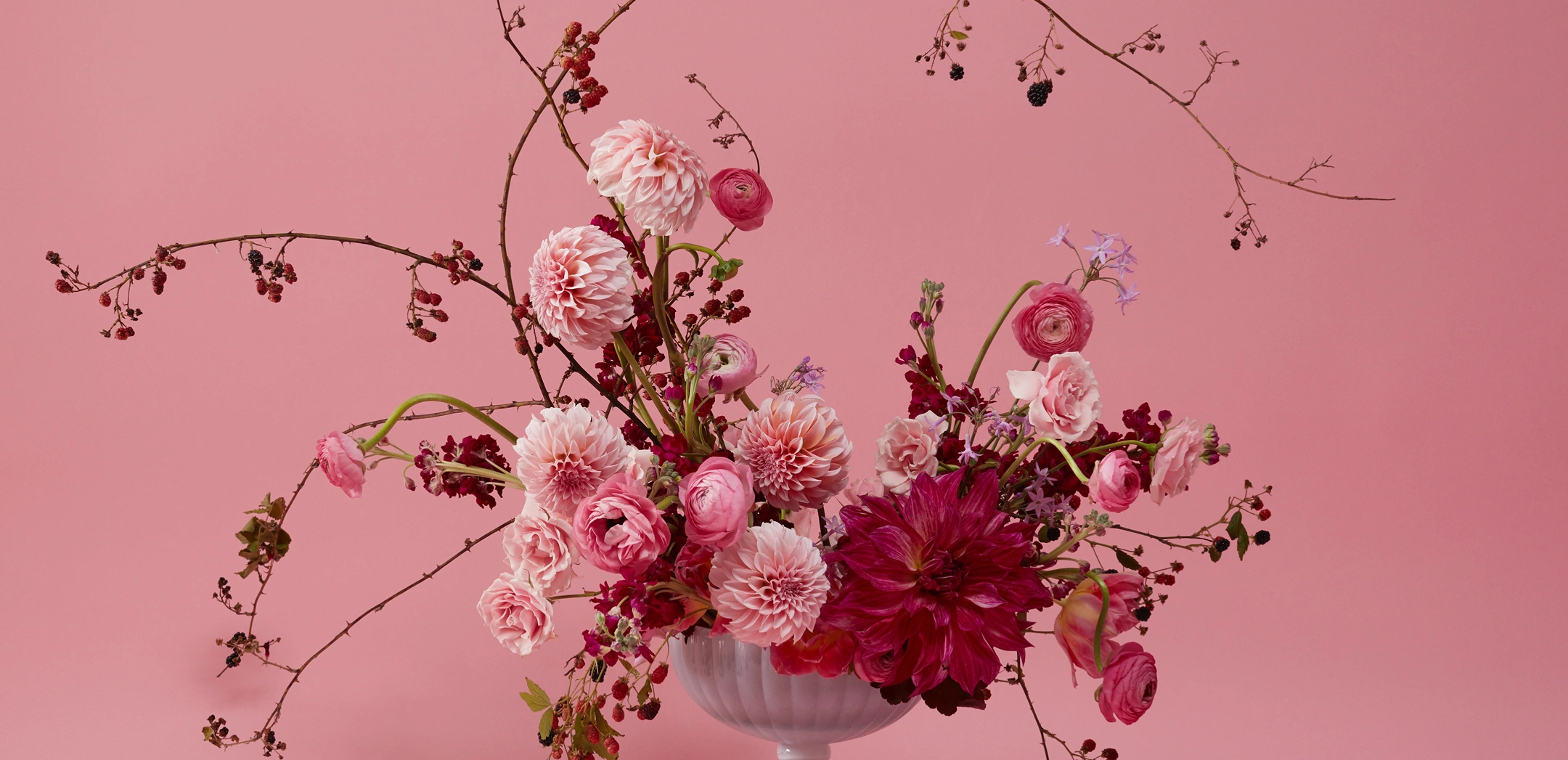How would you define your style?
My style is rooted in the ethereal. I always aim for compositions that feel light and full of movement, but also delicate. I don’t want harsh or abrupt edges, I want continuity, for the eye to travel across the arrangement from the center to the right, to the left… I want it to feel like a story, the storytelling is important, with a beginning, a middle, and an ending that draws you in. That’s why I use lots of smaller flowers, textures… all to create that sense of something not just romantic and feminine, but truly ethereal.
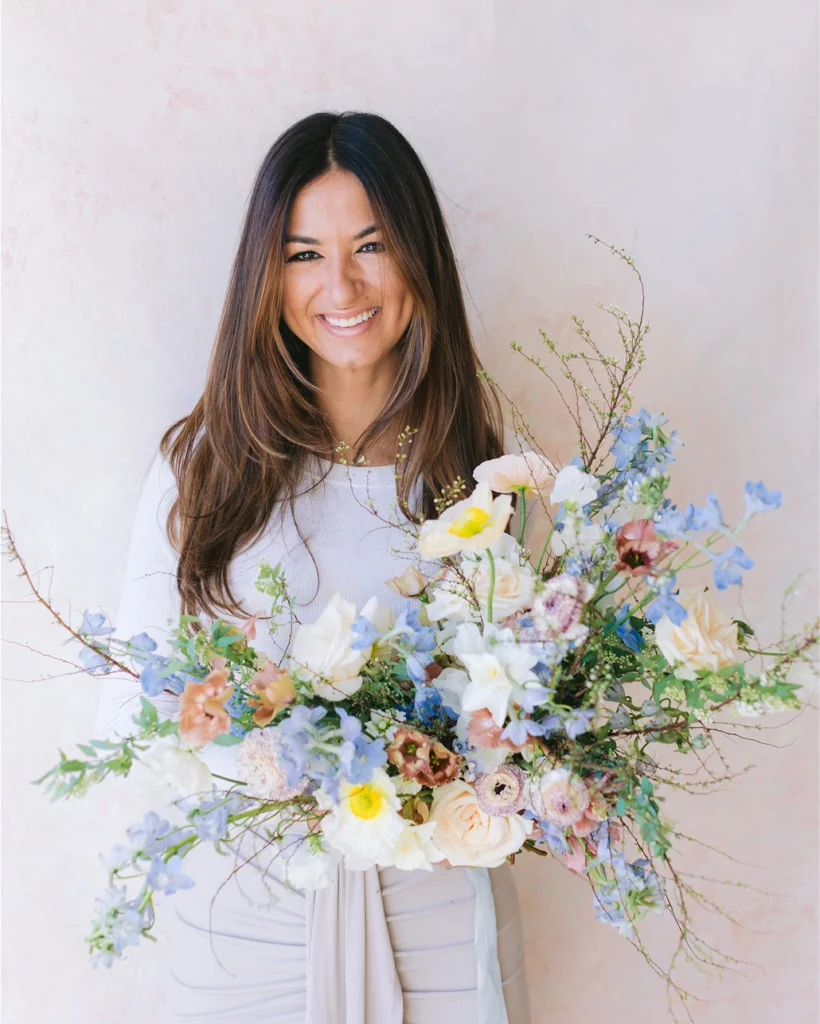
And what about storytelling? Is that something you include in your teaching now? Do you work on it with your students?
Yes, I approach storytelling more through the idea of perspective, the way you think about your design before you even begin. Think before you do. Be clear about your intention. What do we want to say? Are we communicating something entirely white? A more modern take? Something joyful, romantic, or maybe more understated? For me, storytelling starts right there, in that first look at the design. Because without that perspective, you can’t even choose the right flowers to build the story, right? You need that vision to tell it.
“I want people to feel confused. I want them to look at my work and think, how did she do that? What’s behind that flower? I want them to question the arrangement.”
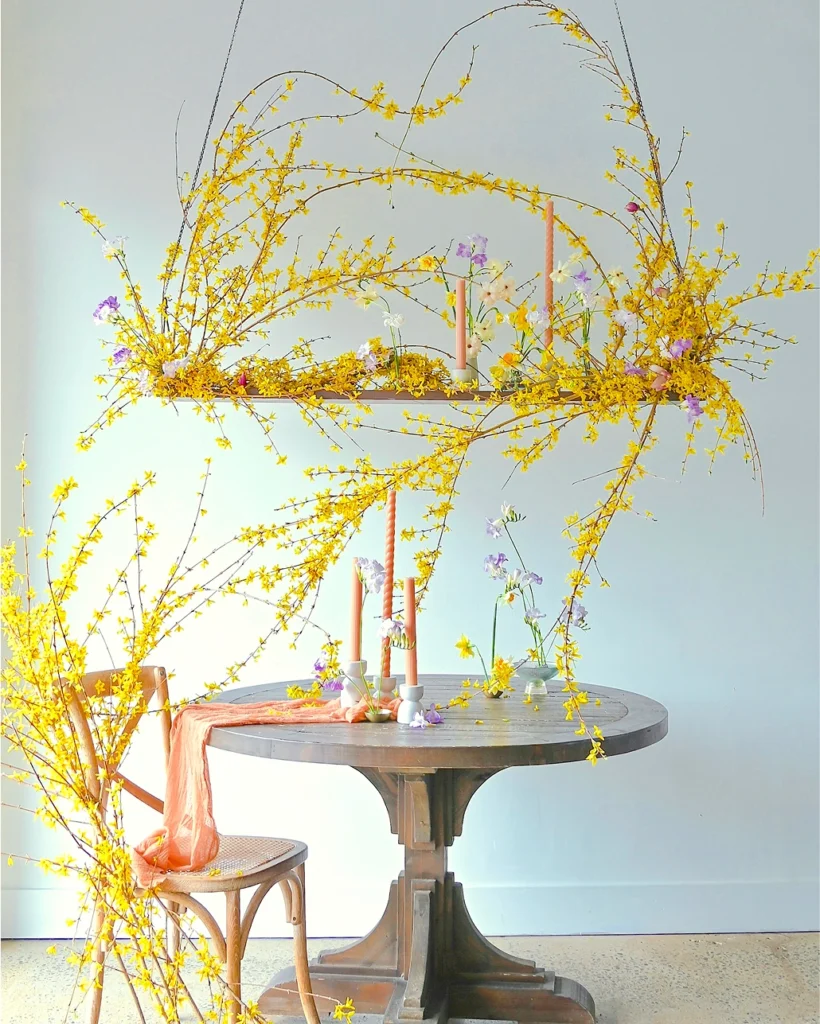
What do you hope people take away from your workshops?
I want people to leave my workshops with the ability to create their own version of the style I teach. I hope they walk away with real tools for designing with space, with negative space, and most of all, that they understand the method behind how to get there. That’s always my goal, not just to create something beautiful, but to teach the steps that lead to that kind of composition. That way, everyone can develop their own style. “This part works for me,” or “I’ll do this in my own way.” And that’s what I find most important, not to copy it exactly, but to use the techniques as a foundation to push their own creativity, their own voice as designers.
Do you think that voice comes with time and practice, or can it also be learned through education?
For me, it’s a mix of both. Courses allow you to absorb bits and pieces from different places, and that helps you start building your own voice. But I believe it’s only through practice, touching, trying, making mistakes, starting over, that you truly find your way of creating. That’s how it was for me, again and again, I’d make something, undo it, take a photo, not like it, change it, try again. It was nonstop practice. And somewhere in that process, your personal style starts to show up.
Where do you see the greatest value in floral education? What makes spaces like Madrid Blooms special, for both you and your students?
The greatest value lies in learning the foundation, how to teach, how to begin. That’s the hardest part of all. I always struggled with that question: Where do I even start? Studying at places like MADRID BLOOMS, or in New York, helps clear away that uncertainty. It gives you a clear path to get going. From there, you create your own journey. But without that base, trying to do it alone, or just watching YouTube videos, is really tough. There’s nothing like having someone in front of you, watching what you’re doing and saying, “Look, this isn’t bad, but here’s why it’s not working, try adjusting this.” That makes all the difference. The worst is when people just say “yes” to everything. I want to learn, but I want someone who’ll tell me the truth.
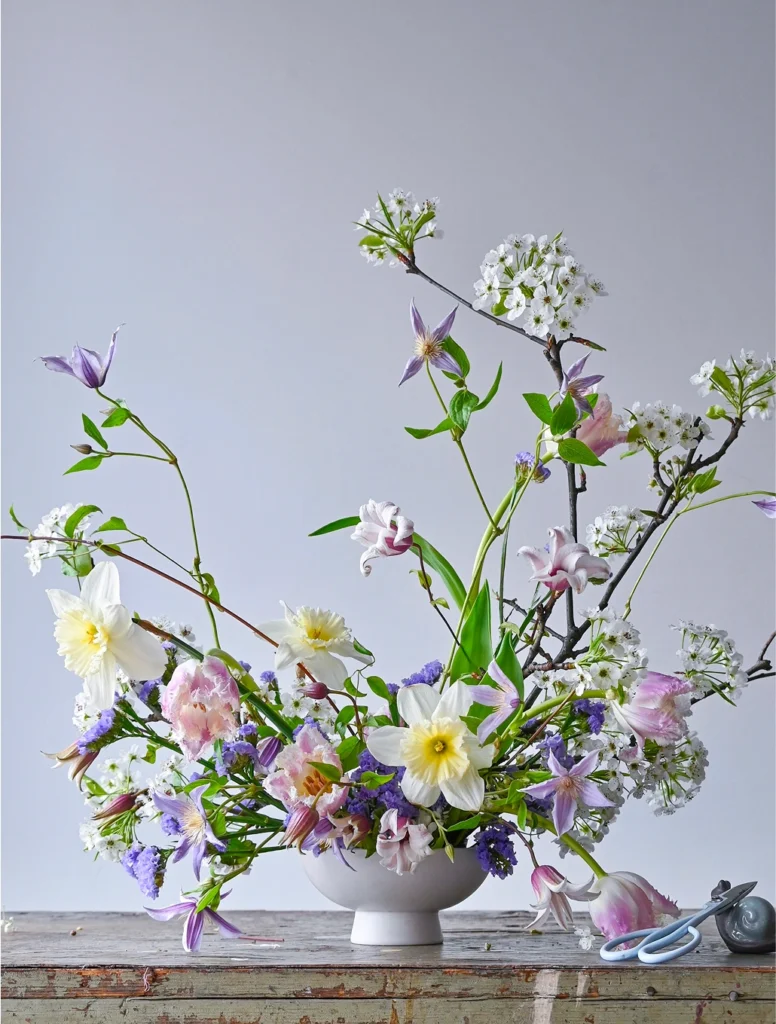
What do you love most about teaching?
I honestly love it all. I enjoy meeting new people, watching each person’s process. It fascinates me when someone arrives feeling overwhelmed or unsure, and ends up creating something they’re proud of. For me, there’s nothing like it, well, maybe except my kids! But seeing someone achieve what they set out to do, and being able to say, “I made this with my own hands, and now I can do more,” that fills me with joy.
Was there a particular project or wedding that marked a turning point in your career?
I think it wasn’t a wedding, exactly, but maybe a moment when I gained real confidence in what I was doing. It was when I did a styled shoot for my brand. I saved up a lot, invested everything I could, rented a venue, partnered with a wedding planner who helped with the details, the tableware, the organization, everything. We collaborated on building a full scene. But everything was done in my style, with my brand’s colors, my vision. For the first time, I was in charge of it all. Everyone was working on my idea. And that was the moment I thought Yes, I can do this. What I see in my head, I can actually bring it to life. And people responded really well. With those images, I built a new website. That’s when planners started reaching out. From there, the work started flowing, and with every wedding, more opportunities came.
What inspires your aesthetic?
Nature, especially the feminine side of it, is my biggest source of inspiration. I’m always looking for that softness in my designs. For example, I love the delicacy of jasmine with its tiny curls and subtle details. I pay close attention to those things. I also get a lot of ideas from how trees grow, how one branch becomes the main line and another extends slightly to the right. I study those trunks and natural structures to guide my arrangements.
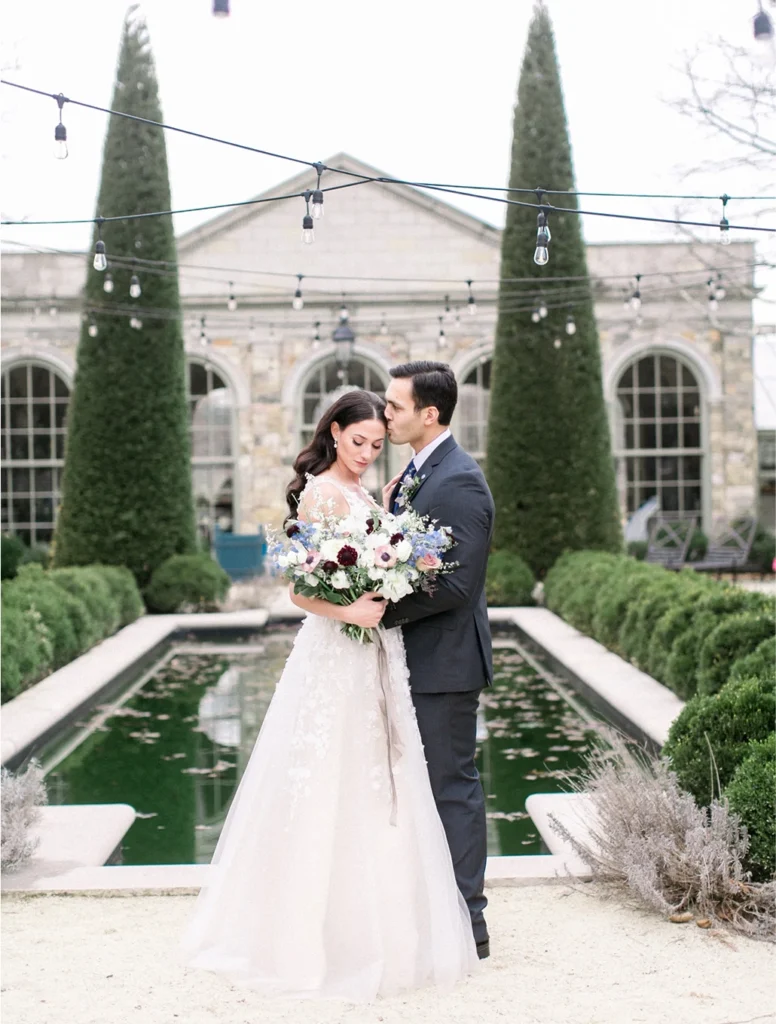
Where do you find inspiration when choosing your color palettes?
Color also comes to me from nature. Sometimes I notice small details like the inside of an orange tulip that might have a deep violet center and a touch of yellow. That kind of combination can be spectacular. I love drawing directly from those natural moments. I also look at fashion, especially houses like Dior and Chanel, to see what colors designers are using in clothing and interiors. I pay attention to what’s happening in painting and space design too. And when a bride gives me some creative freedom, I like to introduce a trending color. That soft chartreuse green is everywhere right now and I think it’s about to take off even more.
Has any recent project been especially meaningful for you?
Last year we did a green and white wedding, which isn’t usually the most exciting combo for me in terms of color challenge. But I added a pop of orange and the bride let me use really interesting flowers like dahlias, ranunculus, and anthuriums, those bold sculptural ones. I loved the contrast of something so strong mixed with softer, petal-heavy elements. I also used a lot of plants, not just flowers, and displayed them in glass containers with the soil and stones visible, all on beds of moss. I never imagined it would look that beautiful. Honestly, I was thrilled with the result.
Could you share a tip or piece of advice for someone starting out in the wedding and events industry?
One thing I still sometimes forget but that’s so important is to always bring extra containers. If something breaks and you’re two hours from the venue, the stress is real. The same goes for jars, candles, candleholders, bring two or three extra of everything. You never know when someone might say the table is bigger than expected or want to add a new one. Even if you’ve confirmed every detail, changes happen. And if you have extras, you can adapt without panic. Because the worst thing is for the bride to feel like you didn’t try everything to fix it. In that moment it’s not the venue or the planner, it’s you. You have to be the problem solver.
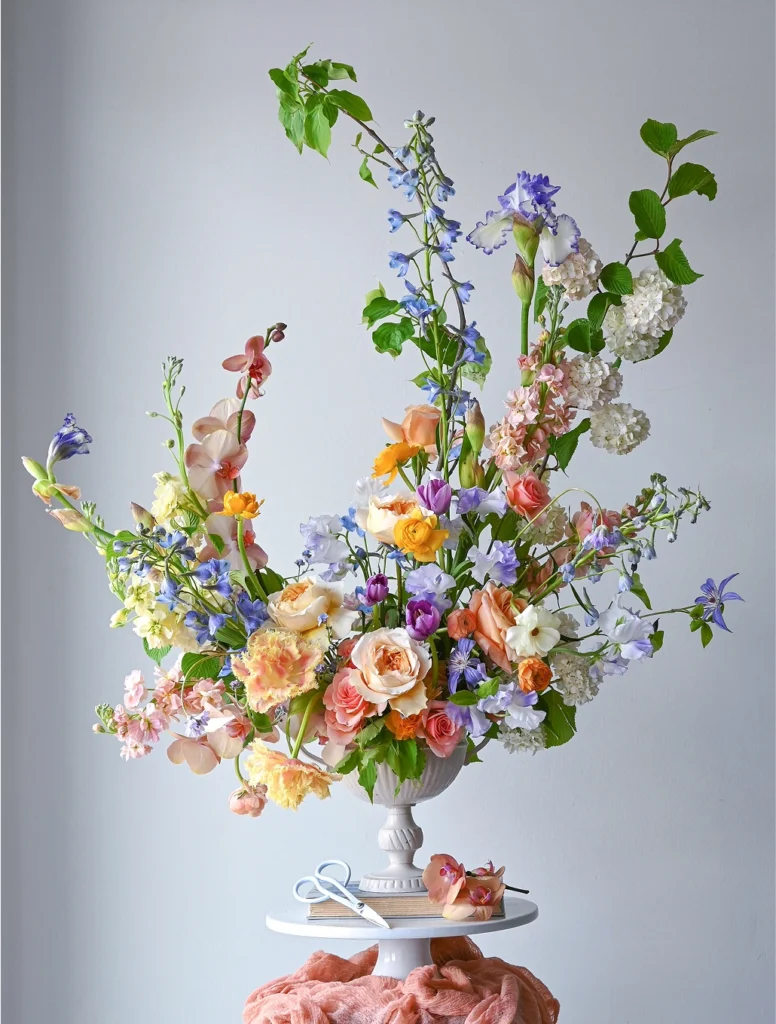
Do you incorporate sustainable techniques in your weddings?
Yes, whenever I can I use wire and avoid floral foam. I only use it if there’s absolutely no other way, but I much prefer working with water. Not only is it better for the environment, but flowers like water more. With foam, once you make a hole it starts to break down and that creates a whole set of problems. I think it’s great that there are spaces where these techniques are being discussed. And I believe that if someone is just starting out and learns to work without foam from the beginning, they’ll be much better off. Sometimes people who start with foam come to my classes and find it hard to understand techniques like pin frogs or using wire because everything moves. And yes, it moves, but that’s part of it, and that’s the beauty. If a flower doesn’t want to be in a certain spot, let it go. I love the idea that flowers have a personality of their own.
When people see your work, whatever it may be, what do you want them to feel?
My answer might sound a little strange, but here’s why. I want people to feel confused. I want them to look at my work and think, how did she do that? What’s behind that flower? I want them to question the arrangement, because if they can understand it in a second, for me that means it’s not a good design, I didn’t reach my goal. It could be very simple, but if the line is interesting and sparks curiosity, if it makes them ask things like, is that a carnation? What is that? That’s always my goal. Even with a bridal bouquet, I want them to look at it and say, what’s in the center? What is that? And that green? I want something to pull them in, so they can’t just see it once and forget it, so it stays with them.
